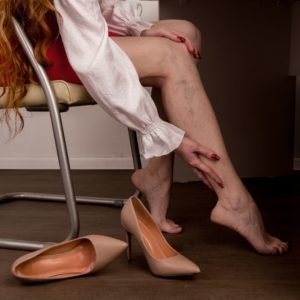
Endovenous radiofrequency ablation can eliminate varicose veins with minimal discomfort, minimal bleeding, and a short recovery period compared to traditional vein procedures. This treatment is performed in the office with a local anesthetic that prevents pain. In most cases, the entire process is done in less than an hour.
What is Treatment Like?
After numbing the skin, the endovenous radiofrequency ablation procedure takes place through a tiny incision. Through this, a very thin catheter (hollow tube) is inserted into the vein. Upon precise placement of the catheter, a machine delivers radiofrequency energy into the vessel. This heats the walls of the varicose vein and causes it to collapse. The sealed vein prevents blood flow, which means it prevents blood from pooling. Circulation naturally redirects to nearby veins that are better equipped to move it upward to the heart.
Benefits of endovenous radiofrequency treatment include:
- Quick, convenient procedure
- Minimal swelling after treatment
- Little to no bruising or scarring
- Short recovery period
What is it Like to Recover from Endovenous Radiofrequency Ablation?
Most patients can comfortably resume normal activities on the same day as their vein treatment. Mild bruising and swelling are expected but typically do not get in the way of minor physical activity. A compression garment is applied after endovenous radiofrequency ablation to stabilize tissue and help blood redirect to healthier veins. Compression may be worn for several weeks. Some people wear compression garments continually after vein treatment to promote optimal blood flow when they engage in physical activity like walking and standing for long periods.
Within a week or two after treatment, patients can expect to see their treated veins shrinking and fading away. Symptoms like aching, throbbing, and cramping also tend to subside within a few weeks. According to surveys, 97% of patients who undergo endovenous radiofrequency ablation are satisfied with their results one year after their procedure.
If you’re ready to explore vein treatments like endovenous radiofrequency ablation, contact our Laurel, MD office at (855) 803-MIVC. We’re happy to schedule a consultation for you.


Monday – Thursday: 9am – 5pm
Friday: 9am – 1pm
Saturday – Sunday: Closed